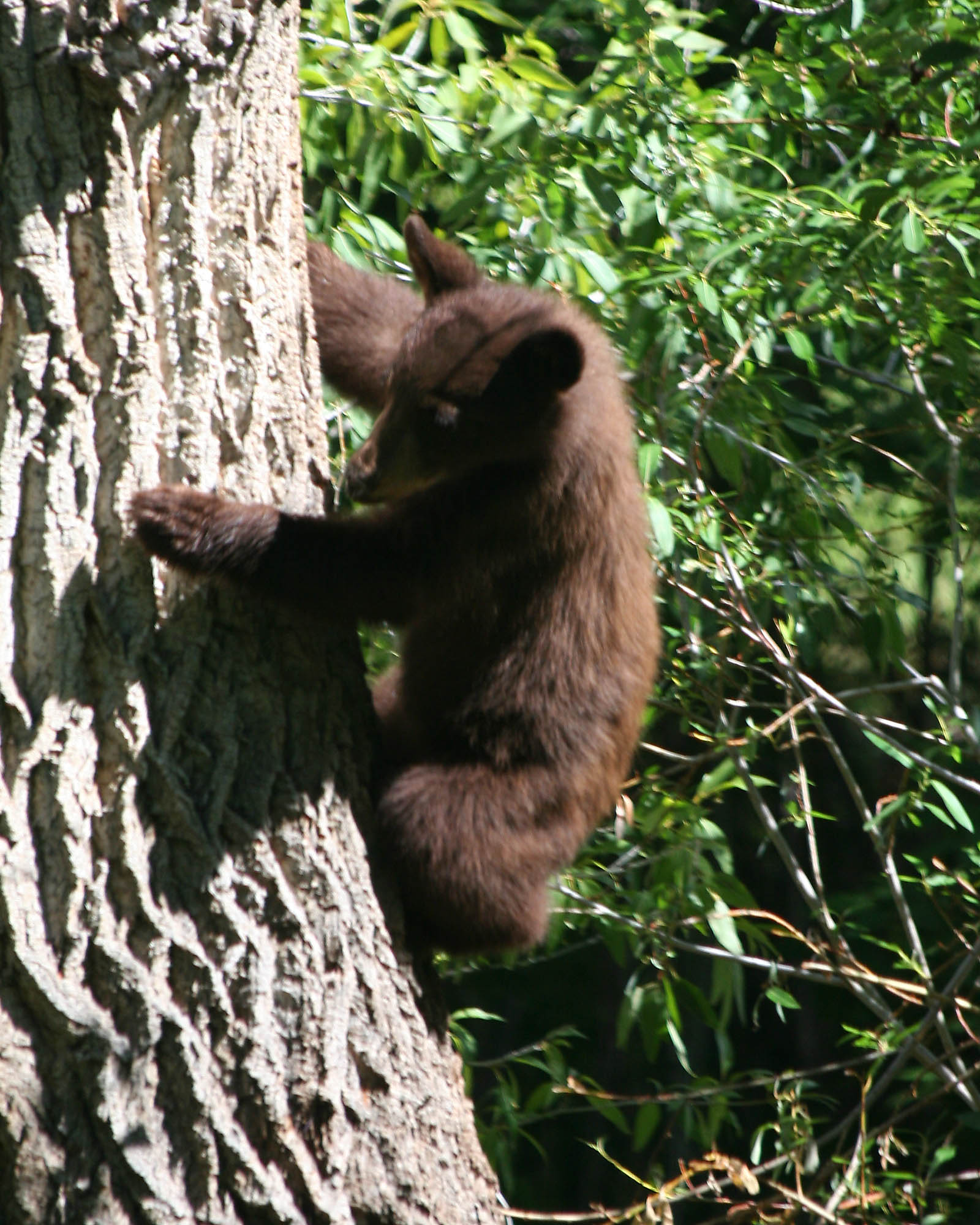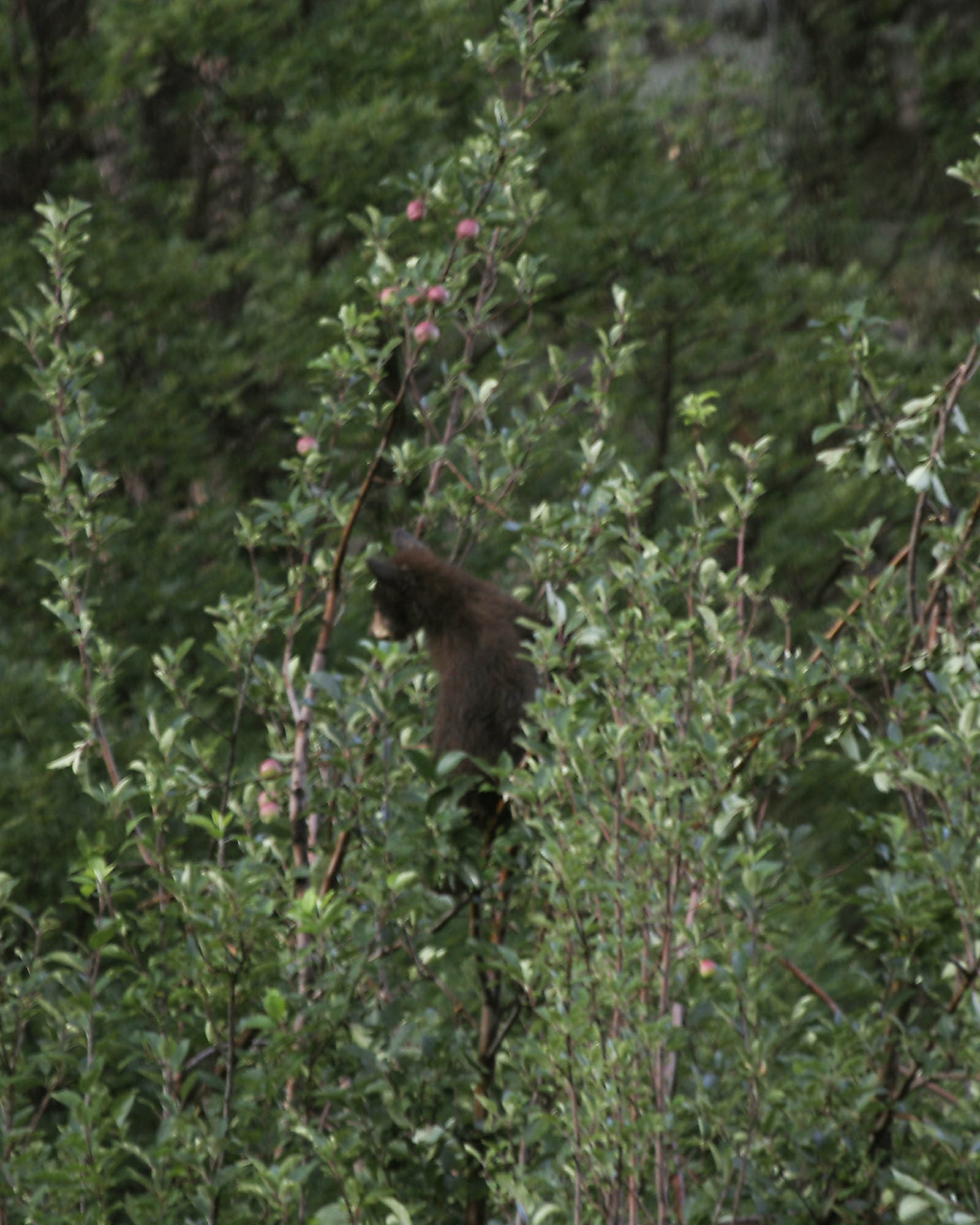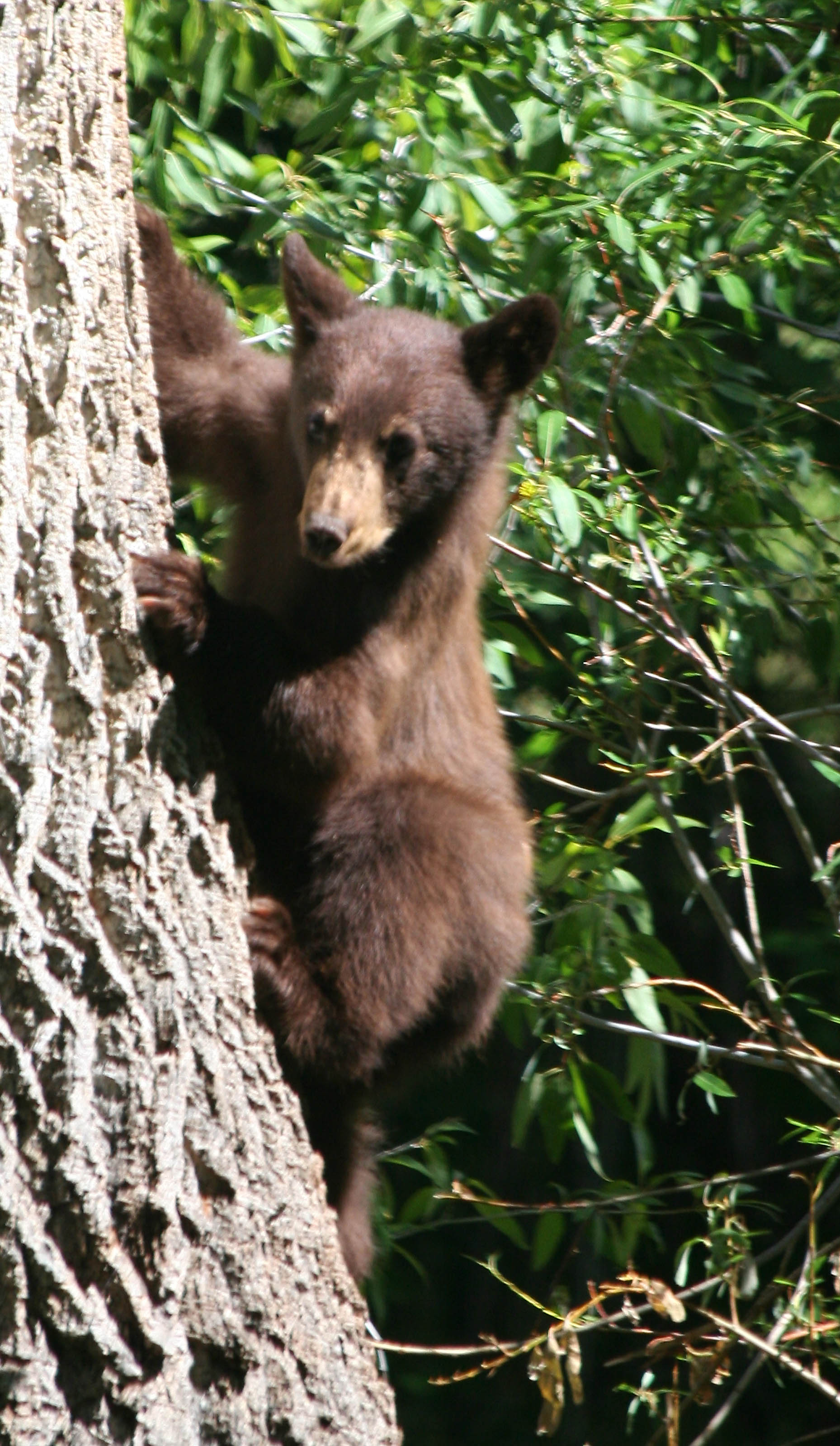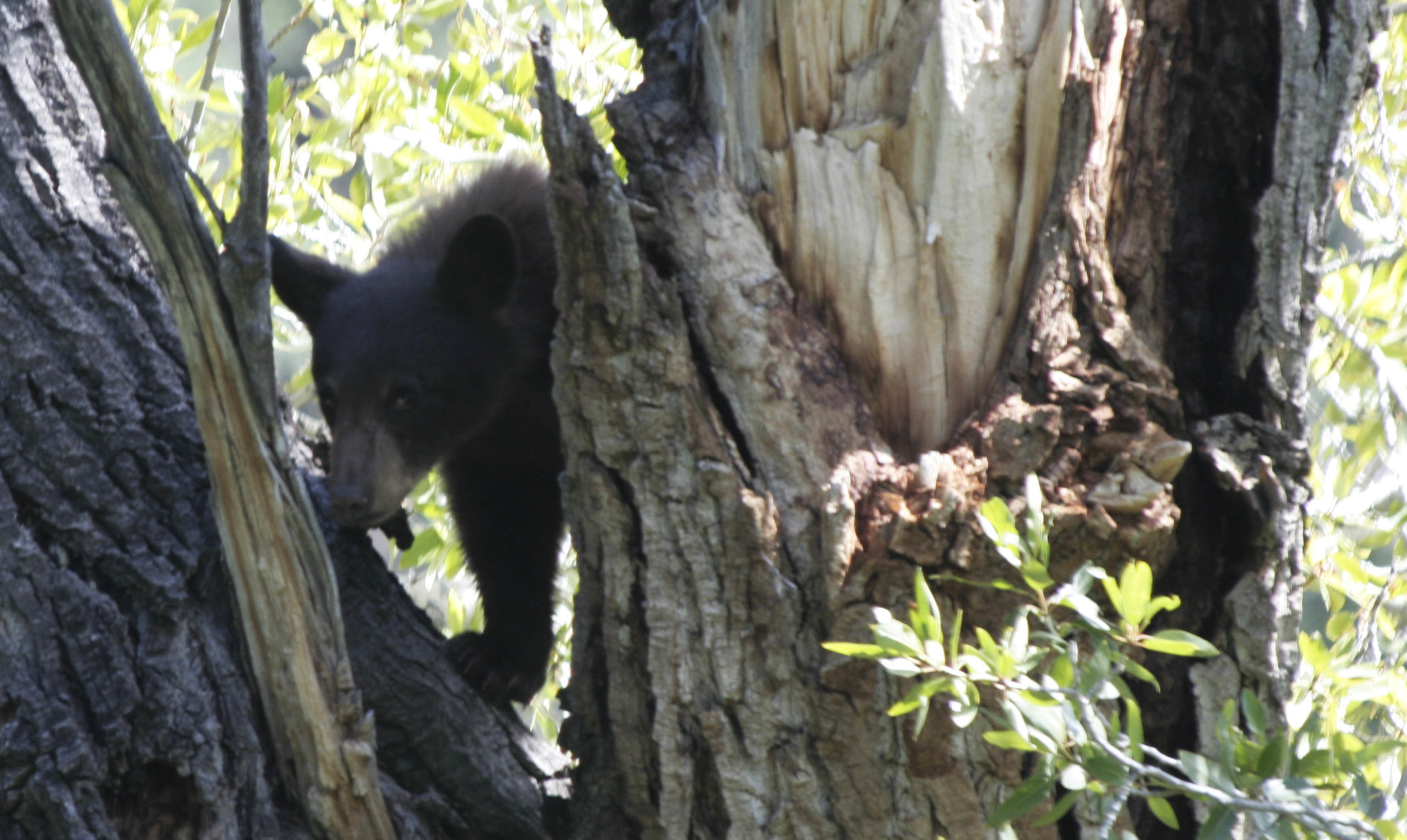 This past August in Northern New Mexico, the black bears came out of their caves, down the mountains, into the apple orchards (and, yes, sometimes into cabins). It had been a fertile winter, and each female was accompanied by one, often two, babies, who would mew and chortle as they climbed high in the apple trees, stripped clean the chokecherry bushes along the Sapello River, and searched for grubs under rotting logs. Don't believe anyone who tells you that bears only come out at dawn or dusk because these baby bears were like puppies, playing and eating all through the day, with only short breaks for naps.
This past August in Northern New Mexico, the black bears came out of their caves, down the mountains, into the apple orchards (and, yes, sometimes into cabins). It had been a fertile winter, and each female was accompanied by one, often two, babies, who would mew and chortle as they climbed high in the apple trees, stripped clean the chokecherry bushes along the Sapello River, and searched for grubs under rotting logs. Don't believe anyone who tells you that bears only come out at dawn or dusk because these baby bears were like puppies, playing and eating all through the day, with only short breaks for naps.
"Destruction" by Joanne Kyger (accompanied by photos I took this summer)
First of all do you remember the way a bear goes through a cabin when nobody is home? He goes through the front door. I mean he really goes through it. Then he takes the cupboard off the wall and eats a can of lard.

Black Bear Facts
Did you know that although they are called black bears, colors can range from black to cinnamon brown, silver-blue and, occasionally, even white? The white bears are called "Spirit" or "Kermode" bears.
Ten Fast Facts About Black Bears
1. eat mostly berries, nuts, grasses, carrion, and insect larvae 2. have color vision and a keen sense of smell 3. are good tree climbers and swimmers 4. very intelligent and curious 5. can run up to 35 miles per hour 6. weigh an average of 125 to 600 pounds 7. go without food for up to 7 months during hibernation in northern ranges 8. usually give birth to 2 to 3 cubs during the mother's sleep every other year 9. can live over 25 years in the wild (average age in the wild is 18) 10. are typically shy and easily frightened
Watching the bears this summer, I felt honored by their presence, as if they had opened my eyes and ears and allowed me a small peek into their world. I wish them well, I hope that now that the apples are gone they are feasting on acorns, fattening up for their long winter nap.
I wish them to be safe and to sleep well.





